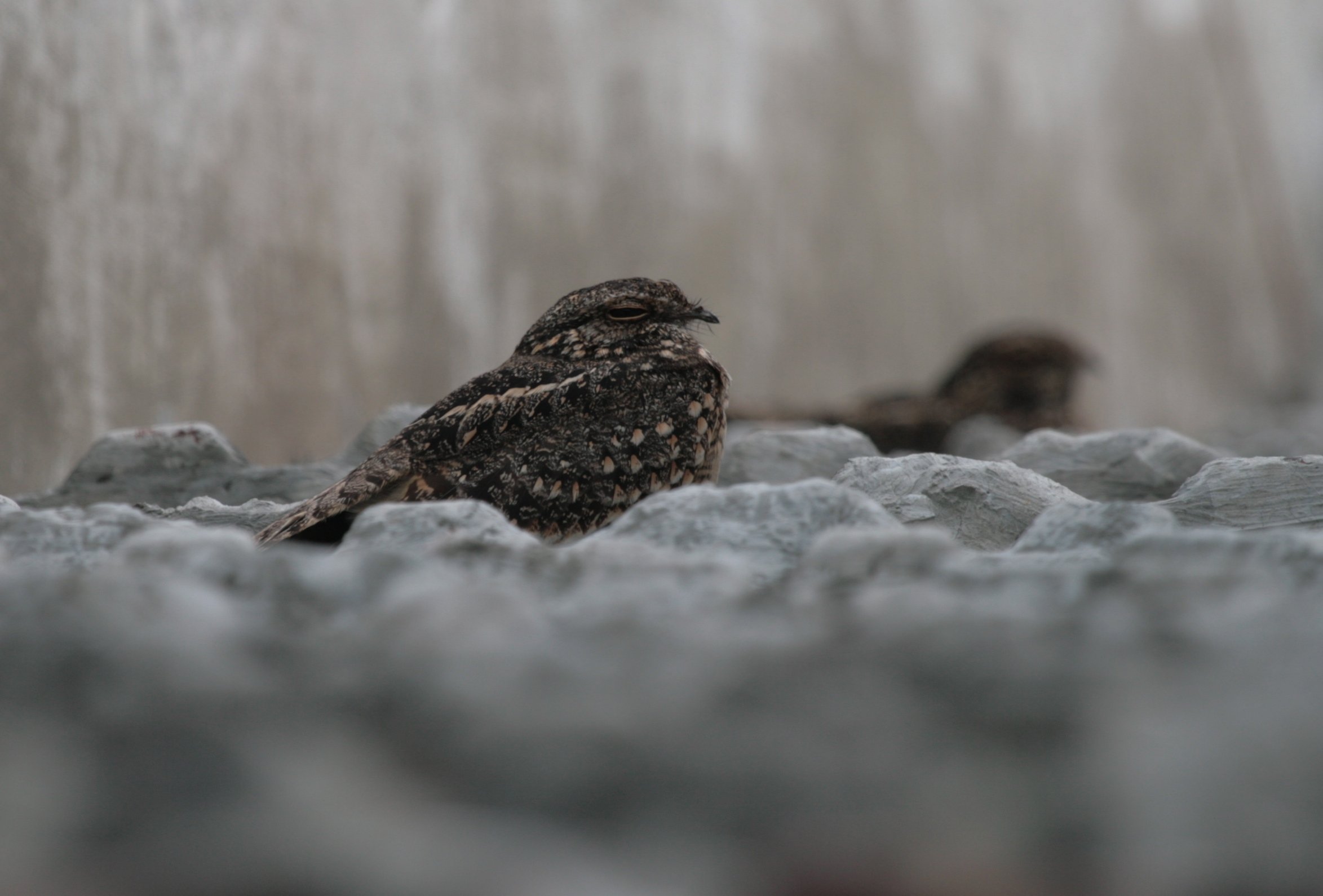
I am starting to feel my age. To be clear, in my early 40’s I really am not complaining. However, I feel the wind of an increasingly fast downhill ride in my face now: I notice that I should probably get myself some reading glasses soon. My left knee occasionally hurts after a long day in the field. Overall, I can’t do things anymore that I could do just a few years ago, both physically and mentally. While still in my 30’s I did not feel any differences to being in my 20’s, but the early 40’s make it clear once and for all that I have definitely left my youth behind. This sounds – and is – dark. There is, however, also a bright side to it all. With age comes wisdom, a calm feeling of security, of having a firm place in, and grip of the world around me. My life experience allows for a generally calm and balanced demeanor. I just know things even without having learned them. I simply and correctly deduce the facts from analysing and observing the world. This has allowed me to move from having an opinion to owning the truth in all that I say, and being invariably correct in all that I do, regardless of what others say or write – be it in casual conversations, books, or in scientific publications. I am just not fooled anymore.
Take, for example, the group of the goatsuckers Caprimulgidae – the nightjars, and nighthawks, and whip-poor-wills, and widow-chuckers. I know for a fact that science is correct in stating that they don’t suck the milk of goats. Why? Well, because I have seen many a goat’s udder, and not once did I notice a nightjar attached to it. Then again, science is definitely wrong in stating that goatsuckers have legs. They don’t, and I know it. Why? Well, because I have seen many a goatsucker, and not once did I notice a leg attached to it. They sure have feet, which is the likely cause for some whippersnapper scientists to conclude they must have legs for the feet to be attach to. But they don’t. The feet are directly attached to the belly or – frankly – might really just be specialized derivates of their breast feathers. This is what I am able to conclude from my age-related immense treasure trove of experience, which makes it an indisputable truth.
Here, I show you a few images of Savanna Nightjars, a Southeast Asian species I was able to observe nicely and commonly on Java and South Borneo in 2012 and 2013. You will clearly see a nice bird, but you will see no legs whatsoever.
A Savanna Nightjar day-roosting in a relatively natural area (not all lawns should go the way of the dodo). You can see clearly why it made sense for them to lose their legs, or have you ever seen a fallen leaf on stilts?
Here is another one:
No. Legs.
A critical scientist or a generally skeptical person may now state that the legs are hidden in the tall grass in the first image, or in specific holes dug into the ground by the nightjar in the case of the second picture.
No, they are not. You can’t hide what you don’t have, and luckily Savanna Nightjars are frequently found in man-made habitats of more open character:
This bird is sitting on a road below a street lamp. You see? No legs. The feet protrude directly from the lower breast feathers, and – as suggested above – might be nothing but modified breastfeathers after all.
Here is a further series of images from another typical day-roost of the species: roof-tops. If you feel the inclination to experience failure, try spotting legs on them:
Legs: The Expendables 1
Legs: The Expendables 2
Legs: The Expendables 3
.
Those are the benefits of growing old. When life offers you lemons, make lemonade. Still I struggled and I suffered in the heat and humidity of a survey’s day on Java this past April, and I thought of the times in my 20’s when I hiked the Namibian deserts as if it was the easiest thing to do. Then I did it. I knew back then that I shouldn’t do it, but I couldn’t help it. And after all: when I asked myself at that very moment if life could get any worse, it was meant as a metaphoric question, not a challenge. The tropical thunderstorm life sent to me in response however was far from metaphoric. It was the vital part of a perfidious plan.
Luckily a tropical thunderstorm is the kind of weather phenomenon you can spot from afar, and I managed to leave my survey site and reach the bungalow in time to avoid the down-pour. So I found myself in the dry safety of a house, stood by the window, marvelling at the heavy rain outside and the fact that my old age and life experience had allowed me to calculate exactly when it was time to leave my survey area and arrive at the bungalows in a dry state.
This is when I accidentally bit on one of the lemon seeds life had tossed into my lemonade: On top of the bungalow next to mine, I could see a small group of Savanna nightjars perched in the rain on the open roof, and I asked myself if it was such a smart move to be perched on a rain-gathering roof when one has no legs to stand upon. Then I looked more closely:
What, by the great-grandson of Stresemann, is that bird in the lower foreground perched upon!?
Legs! It’s got legs (and knowns how to use them)!
Who knew, or could have known!?
.
I feel betrayed and disillusioned. The only bright side to growing old has been dipped in ink.
.

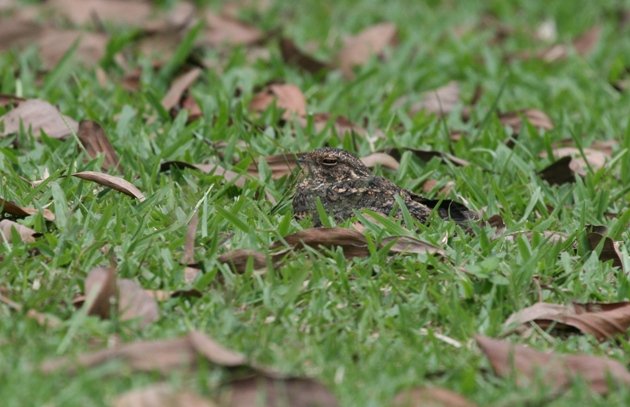
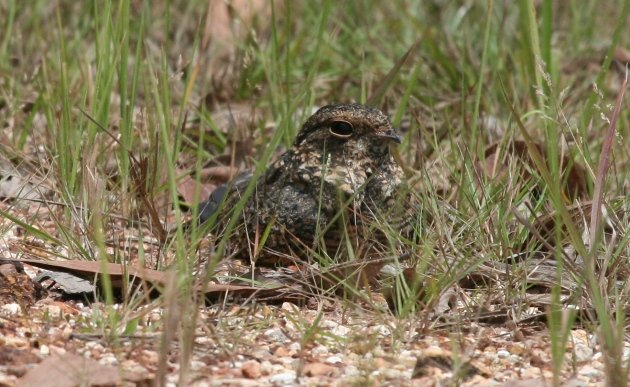
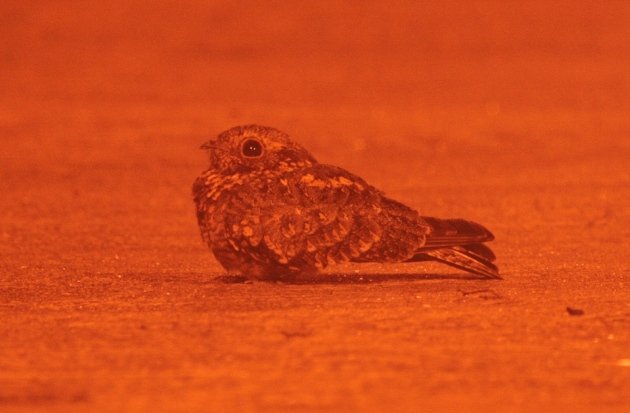
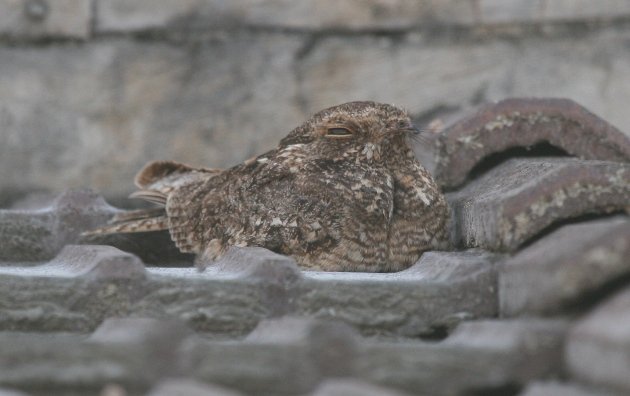
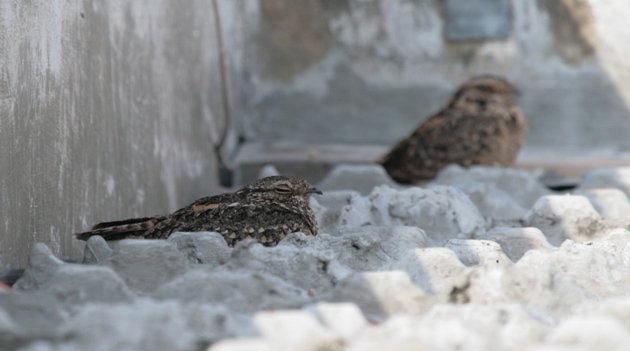
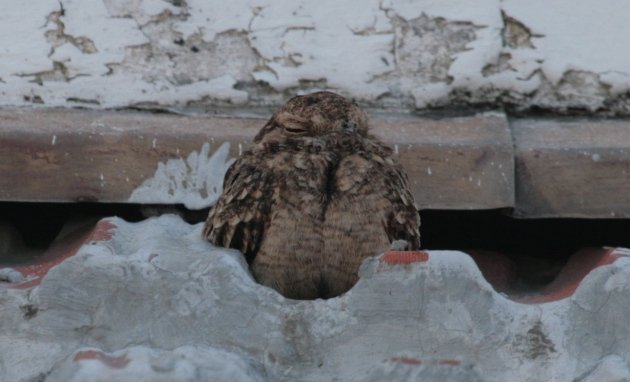
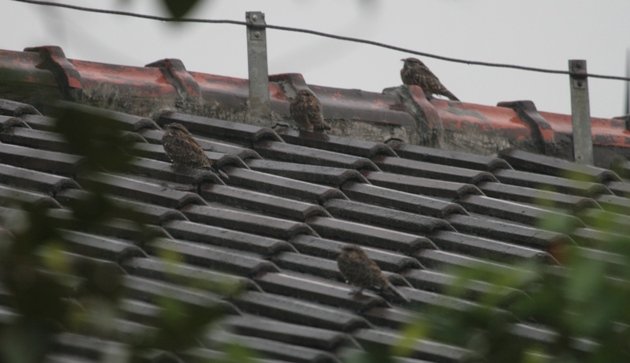
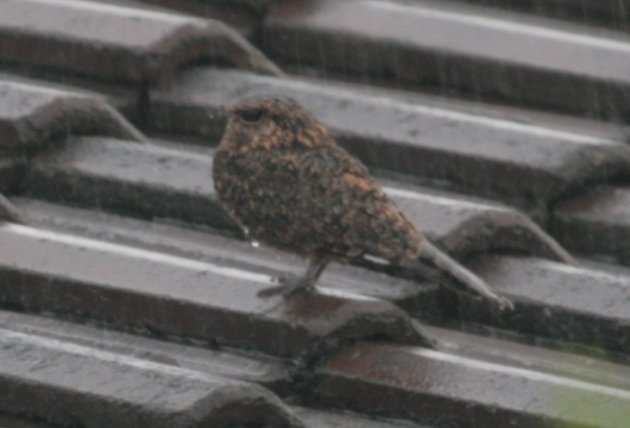



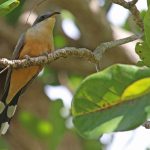
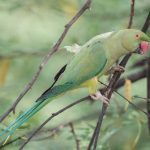
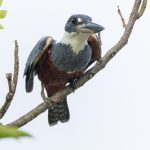

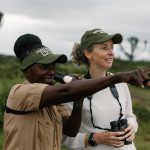
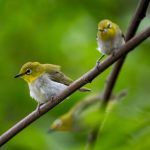
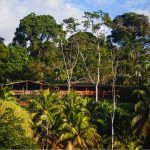
Just turned forty a few weeks ago. I feel your pain. Nearly died birding on a hot afternoon in southeast Arizona last month that wouldn’t have bothered me ten years ago. Then, in 102 degree heat (39 degrees by a more rational metric), a man easily 20 years my senior was bicycling UP a mountain. He stopped, chatted with me, told me he was from Wisconsin (?!) and then kept going. I wept.
What an entertaining post – thank you! As a bonus, I learned a new word: perfidious.
Great post, Jochen! We are also both over 40 and “life is good”. We are of the USA “Golden” field guide era just like you! 🙂
Very insightful post Jochen. All I can say is that it starts with the glasses and goes downhill from there. Those aches and pains you are feeling now — nothin’. The real physical downslope starts when you turn 60, as far as I can tell. But the wisdom side of the equation, you were right about that! At my age, I already knew that the nightjars had legs (and knew how to use them). Even though I had never seen them either 😀
Entertaining post as always! I hear you on reaching the 40s and those associated hints that the limber golden days of being a 20 something are ancient history. I was likewise pretty sure that nightjars were bereft of legs- and here you shatter that belief with a crazy picture of a standing Savannah Nightjar. What could be next? An Ostrich that flies? A penguin that lives on the equator (Doh! There already is one that does that!)? An easily identifiable Phylloscopus? I have the sudden urge to read something by Camus…
Oy, at the tender age of 39, you are showing me the abyss. Thanks for making a bleak afternoon even bleaker. I remain firmly convinced though that running ridiculous distances and faithfully consuming chocolate-covered espresso beans will make me invincible to the ravages of age. Because 40 is the new 20, right?
Don’t worry, Jochen. I am 99% sure that the Nighjar in question is really Caprimulgus affinis plasticus, a relative of the ubiquitous Bubo plasticus found on many rooftops in the United States. And, yes, as Larry says, this aging thing gets better and better.
I think I see what’s happening here: like whales and snakes, nightjars still retain rudimentary legs, and occasionally individuals or populations might show unusual development of those mostly-useless appendages.
@ All. just got back from a two-week family trip to Brittany / Bretagne. Thanks for the many great comments!!!
🙂
@Dragan: hmmmm, I guess we’ll have to travel to New Guinea so you can show me those leg-less birds. Not all is lost then?
@Tom: hey Tom, great to hear from you! Scarcely any businesstrips to Bavaria sadly this year, but I’ll let you know! altmühlsee should be good now!
@Eanna. well, at least you look like 30 while I can consider myself lucky to actually reach the age I am looking now!
You turned 40? Wow … yes, I can remember, those golden days of youth. Heck, I am 42! Try walking in my old worn shoes. And I know those “elderly” people you are talking about. These people and their activities should definitely be prohibited!
Thanks Arden! We use the German word “perfide” rather frequently, and it sounds so fitting to its meaning that I feel it needs promoting in English, too!
“Life is good”. Yeah, right. Aren’t you those people who live on a beach in Australia?! Try living in Metropolitan Heidelberg… 😉
Well, thanks for letting me know about the oncoming pains and downhill drops. And one day, I’ll be so wise as to know what you know before you know it, but then you’ll be even wiser in knowing that I knew you would know … Wait, where are my prescription drugs?
Thanks! At least I am not alone in my disappointment at their having legs.
What’s next? Well, I have this feeling that loons/divers have gills, but don’t tell anyone yet. I reckon I’ll need another 10 or so years in my armchair to really be certain.
Okay, at least you now know there actually is life after 40. And the good side: it is so dark in the abyss that you can’t see how bad it really is. And 40 is the new 20? What!? Well … if it makes you feel better, then it must be true.
You mean to say that hope is the thing with metal legs? I saw the nightjar move. Must be remote-controlled then.
And thanks for trying to make it all look positive. Highly appreciated. *sigh*
Honestly Carrie, as much as your approach offers hope and renewed my self-esteem, it appears as though you are too young to be commenting on this post. After all, you are the only one who spoke of the nightjars only, and not the age!